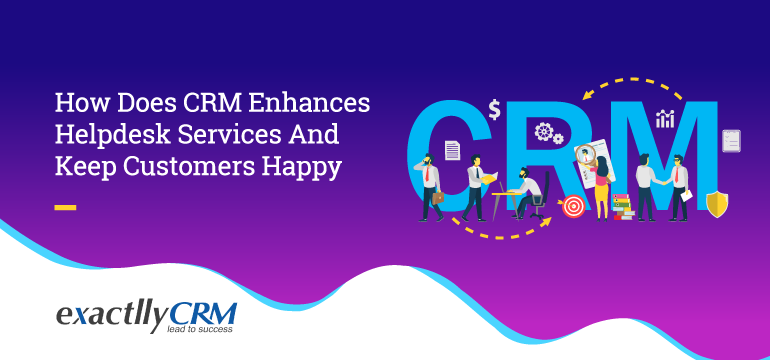How To Get Your Sales Team Use Your CRM Software

So you followed the market trend, carried out extensive research, and just like 75% of most corporations alongside your own, successfully managed to incorporate CRM software into the system. However, has this been enough to spike sales, as expected?
CRM software is simply a cog, put in place to run an organization with high efficiency, but just like any corporate engine, it needs to be fuelled by its employees in order for it to churn out sales effectively. Studies show that 81% of companies have been unsuccessful in utilizing CRM solutions to boost revenues, despite having trained and experienced sales executives at their disposal.
Despite the adoption of new systems by most corporations, user acceptance still seems to be the biggest hurdle encountered by management executives during this gruesome and tedious journey. Here are a few notable points that may ease the process.
1. Choose a Suitable Solution:
More often than not, most sales executives give up on a newly adopted system due to the lack of suitability of the software and a constant need to keep referring to other sources of information. Instead of making the mistake of adopting a generic pre-organized solution, it is advisable to customize tools and align the software to the ways in which your sales team operates.
When choosing a CRM solution, take care to assess whether it sits well with the system already in place. The compatibility with other software systems such as enterprise resource planners and human resource management systems, as well as the integration of certain essential tools such as email and social media clients, must also be considered as per the convenience of the end-users, i.e., the company sales executives.
Ensure that executives are supplied with the relevant statistics, sales forecasts and the necessary contacts, as well as the means to share and communicate such data within the system. Eventually, the quality of your system will be the primary factor that determines employee usage.

2. Include Employees During Selection:
Imposing software on employees is another mistake that is most often repeated. Today, most service providers supply demos and trial software for companies to test the waters before jumping in. Since your sales representatives are essentially the people who would be using the software to the advantage of the company, it might be a good idea to involve them in the process of selection.
Take the opinion of your employees prior to making the decision to settle. Introducing them to different solutions will not only give them the exposure to analyze and provide feedback as per their requirements but will also help in giving you more clarity on what is expected of the new system to be adopted.
Once decided upon, it would be less cumbersome for the management to convince their subordinates of the advantages of the system during the execution phase of the changeover.
3. Explain the Benefits of CRM:
Take a marketing lesson from your own employees and sell the product to them. Your sales team is the consumer, in this case, needs to be convinced of the benefits of the exchange in order to get on board with the decision.
Looking from a practical point of view, explaining how CRM software is beneficial for the organization will not help. However, explaining that the system is faster, has a centralized data system, provides better real-time statistics and will eventually get the job done faster with the least amount of resistance might just sweeten things for the users.
Present to them the aspect of fewer data entry tasks, automation of sales reports, fewer chances of misplacing or disclosing critical information and having easy access to critical information when engaging with clients, and you just might have them sold to the idea.

4. Incorporate Through Upper Management:
Any change encountered by personnel is met with resistance, when not led by example. Having a meeting with senior officials prior to rolling out a new system, sets the ground rules on how to execute the idea. When coming from the upper management, sales executives will have no option but to reciprocate within the framework of the recently installed system.
Begin the process by transferring the necessary data and gradually eradicating the previous system. There is a possibility that your best employees might be reluctant to the change, however, making exceptions would give people the idea that the development is optional.
Sending across a message that all future operations would be carried out under the umbrella of the new solution ensures that a contemporary approach to the sales process is pursued eventually.
5. Impart Training and Acknowledge Feedback:
The sales representatives cannot be forced to use a new technology that is absolutely an alien concept to them and will tend to fall back on the old methods of achieving sales targets. To make this an easier task, the management needs to provide a thorough understanding of the handling of the software with the help of in-depth training.
During the process of training and educating your sales team on the multiple possibilities of the CRM software, the company should also leave scope for feedback to enable maximum performance. Training should be undertaken by professionals with greater communication skills and they should keep the learning sessions interactive with the option of exchanging questions and answers to overcome challenges.
The training sessions should not be boring and mechanical, but engaging and have practical knowledge of using the various software tools.

6. Simplify Access and Reward Usage:
When you’re part of a sales team, you are always on the go to meet deadlines and close deals whenever you’re required to. This is why being dependent on software for information makes life difficult as a sales representative unless you have unhindered access to the storehouse of data across all mobile devices instead of one point source back at your office desk.
Therefore, while investing in a CRM software the company needs to make sure that this isn’t a hindrance to the team. Another very important point of contention is getting your team to start accepting the new software technology in a positive way. And here’s the trick – encourage them by rewarding their efforts to provide information into the software and meet the demands of the organization.
This positive reinforcement will make your team grow better professionally, with newfound motivation and zest, and drive sales to meet and surpass business expectations. Make the challenges disappear when your sales employees face bumps and blocks on the way to success due to concerns in using the CRM solution, by looking into product-specific details and assisting them at every juncture.
To keep it simple, there will be a lot of unforeseen problems in making the sales team accept the CRM solution as part of their work DNA, as they are used to function in a certain way, without relying on external software support. Even then, if these two sides of the same coin can exist in harmony, success for the business is assured.
Feel free to Contact Us and get a Free Demo.






